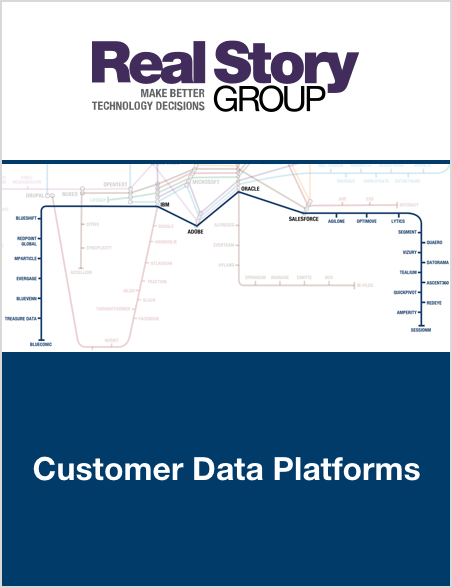CDP Scenario 3: Online Personalization and Experience Optimization
The third scenario or business use case for Customer Data Platform (CDP) technology is Online Personalization & Experience Optimization. (The first two scenarios are described here: Scenario 1, Scenario 2.)
Personalization for Customer Experience (CX)
 If your enterprise seeks to optimize customer experience (CX), then segmentation and personalization will likely play an important role. As a marketer, you can gain several advantages if you have the ability to deliver personalized experiences across different channels and devices.
If your enterprise seeks to optimize customer experience (CX), then segmentation and personalization will likely play an important role. As a marketer, you can gain several advantages if you have the ability to deliver personalized experiences across different channels and devices.
CDPs can potentially address two key dimensions of personalization:
- Understanding Users: Gaining a better understanding of customers, and then...
- Personalizing Experiences: Adapting content, options, and digital experiences based on above understanding
Let’s look at each dimension in more detail.
Better Understand Customers
Most CDPs will do this, albeit to varying extents. As a baseline, a CDP should ingest customer data from different sources and then stitch together unified profiles. For example, you can obtain transaction data from an e-commerce website, enhance it with third-party data (e.g., from a DMP) and then create audiences or segments for further personalization.
For deeper data management and segmentation, capabilities will vary among platforms. Advanced tools go further in terms of analysis (often using machine learning-based techniques), to track domain-specific metrics and get a better handle of customer segments.
Extent of Personalization
Once you understand your customer segments, the next step is the actual experience or offer personalization.
Personalization is never a fixed destination. Your requirements could span a wide spectrum of complexity. For example, your ambitions may span from simply using first names in email communication to more advanced machine learning-based personalization techniques. The breadth of channel reach may also matter, from personalizing emails to website experiences, to mobile apps, to a more holistic omni-channel personalization.
Several CDPs stop after creating segments. They leave it to you to integrate with downstream marketing systems for actual experience personalization. Most will integrate with marketing automation, e-commerce, or campaign management systems — principally by pushing segments or individual records upstream — for personalized campaign delivery. Many large enterprises prefer this approach as it neatly separates data and experience concerns.
Some CDPs also offer in-built personalization engines. Also sometimes known as "recommender" systems, these platforms can recommend content based on different attributes. Websites that show you “spots” based on your profile are an example of this.
Unfortunately, not many CDPs do this well today. The current crop of solutions tend to often force you to create content within the CDP in addition to having that content within your front-line engagement platform as well, so it entails duplication.
Your Next Steps
RSG can help you with your analysis. If you are a subscriber, you can use our RealQuadrant Shortlist Generator to find out which CDP vendors excel at this scenario. Our evaluations also call out specific capabilities for this scenario for each vendor.









